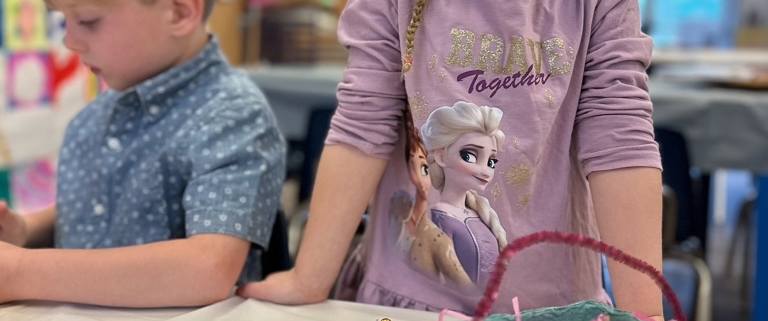8 Fun Easter Traditions from Around the World
Easter is a holiday celebrated around the world, whether for religious reasons or simply to welcome the spring season. While you may be familiar with hiding baskets filled with chocolate and eggs or a visit from the Easter Bunny, you may not have heard about all the kite-flying, mystery-reading, and water-sprinkling happening elsewhere. Read on to learn about unique Easter traditions and consider adding a lively new activity to this year’s festivities.
1. Kite Flying
The sky over Horseshoe Bay Beach is awash with color in Bermuda, as local residents fly kites handmade at the annual Kite Festival on Good Friday. Legend has it, a local Sunday school teacher used a kite to symbolize the ascension of Jesus Christ — and it’s been a hit ever since. Today, festivalgoers participate in kite competitions, races, Easter egg hunts, and fishcake contests.
2. French Omelets
From hunts and rolling contests to dyes and breakfast, eggs are a quintessential symbol of Easter. But they take on special significance in France, where 15,000 eggs and over 300 pounds of bacon, garlic, onions, and crawfish tails go into the world’s largest omelet enjoyed by some 10,000 people. The modern tradition began in 1973, but was inspired by Napoleon’s overnight stay in the tiny southern town of Bessières where he enjoyed an omelet so much he ordered the locals to fetch every egg in the village to prepare a gigantic omelet for his entire army the next day. Today, the food is prepared by the The Giant Omelette Brotherhood of Bessières.
3. Murder Mystery Reading
There’s nothing like curling up with a good book during the chilly winter months—and don’t they know it in Norway, where there’s just six hours of daylight and average temperatures well below freezing. Crime stories, detective thrillers, and murder mysteries are their books of choice—a tradition known as Påskekrime. The tradition began in 1923, when a snippet of a murder mystery was printed on the front page of the newspaper and mistaken for fact. Today the stories are so pervasive you can even find them printed on milk cartons.
4. Costumes
Witches may be best associated with Halloween, but in Sweden and Finland, children dress up as “Easter witches” with old clothes, broomsticks, and copper kettles, going door to door and trading decorated willow branches and drawings for chocolate eggs. The tradition stems from the belief that witches head off to Blåkulla to party with the devil before Easter, so the children recite a blessing and their parents burn Easter bonfires to keep the evil away.
5. Italian Fireworks
You may think of fireworks for Independence Day or New Year’s, but Florence, Italy celebrates Scoppio del Carro, meaning “explosion of the cart,”an Easter firework display dates back to the First Crusade. In the modern-day celebration, the Archbishop of Florence lights a small coal lantern using flints once gifted to Pazzino, a crusade hero who climbed the walls of Jerusalem to raise the Christian flag. A pair of festooned oxen then travel the town pulling a three-story wagon built in 1622 loaded with fireworks. Drummers, flag throwers, and people wearing ornate 15th century costumes parade alongside the cart. Once the procession reaches the cathedral, the Archbishop of Florence sends out a little dove rocket attached to a string mechanism to set off the grand fireworks display.
6. Luxembourg Pretzels
The third Sunday in Lent marks Bretzelsonnden, or Pretzel Sunday, where the people of Luxembourg once showed their affection with sweet puff pastries decorated in icing and almonds. Dating back to the 18th century, a gentleman would offer the lady he fancied a pretzel on this day—and if she accepted, he visited on Easter Sunday to see if she found him sweet. If so, he received an egg in return. If not, he received an empty basket. On leap years, the girls offered pretzels to the guys. While the spring flirtation ritual has become antiquated, locals old and young still enjoy simply buying and eating their sweet frosted pretzels this time of year.
7. Bonfires
The tradition of lighting fire to chase away cold, dark winter and welcome the warmth of spring dates as far back as the ancient Egyptians. Osterfeurer has been incorporated into Easter Sunday and Monday traditions as the first major community gathering after months of Northwestern European winter — and about half the town attends! As you might expect, there’s beer and sausages, and locals also roast balls of dough over the open flames. Soon to follow are the communal fires on April 30th, a holiday known as Walpurgisnacht in Germany, Valborg in Sweden, or Čarodejnice in the Czech Republic—which purges the land of darkness and welcomes in the new growing season.
8. Dyngus Day
After weeks of fasting and praying, Easter brings a collective sigh of relief in Polish diaspora communities across Europe and the United States (particularly the rust belt cities of Buffalo, Chicago, and Cleveland). Groups gather for food and drink, parades, live music, and polka dancing the following day on Easter Monday — also known as Śmigus-dyngus, or Dyngus Day. As per tradition, boys chase girls with branches and water guns, and girls who get soaked are believed to marry within the year. These days, pussy willows and water guns are used by everyone who partakes in the festivities.
Love learning about cultural traditions? If you live in New York City, The Hamptons, or the Tristate Area, sign up for Shine’s Globe Trekkers class to visit a new country each week to enjoy the art, music, flavors, and games.



